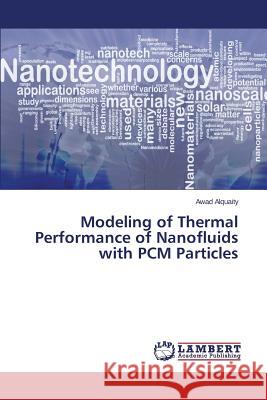Modeling of Thermal Performance of Nanofluids with PCM Particles » książka
Modeling of Thermal Performance of Nanofluids with PCM Particles
ISBN-13: 9783659769351 / Angielski / Miękka / 2015 / 192 str.
Development of next generation microchips and other high heat generating applications is constrained by the issue of effective heat removal. One of the most promising methods to enhance heat transfer is to introduce nano-sized phase change material (PCM) particles in the heat transfer fluid. In this work, commercial Computational Fluid Dynamics (CFD) software ANSYS Fluent was employed for modeling the thermal performance of liquid flow with nanosized PCM particles in a microchannel. The research carried out here resulted in a thorough quantitative assessment of heat storage capacity enhancement which can be achieved through the use of nanosized phase change material particles. The results showed tremendous potential for using nanosized phase change materials in liquid heat sinks for effective heat removal in high heat generating applications.
Development of next generation microchips and other high heat generating applications is constrained by the issue of effective heat removal. One of the most promising methods to enhance heat transfer is to introduce nano-sized phase change material (PCM) particles in the heat transfer fluid. In this work, commercial Computational Fluid Dynamics (CFD) software ANSYS Fluent was employed for modeling the thermal performance of liquid flow with nanosized PCM particles in a microchannel. The research carried out here resulted in a thorough quantitative assessment of heat storage capacity enhancement which can be achieved through the use of nanosized phase change material particles. The results showed tremendous potential for using nanosized phase change materials in liquid heat sinks for effective heat removal in high heat generating applications.











